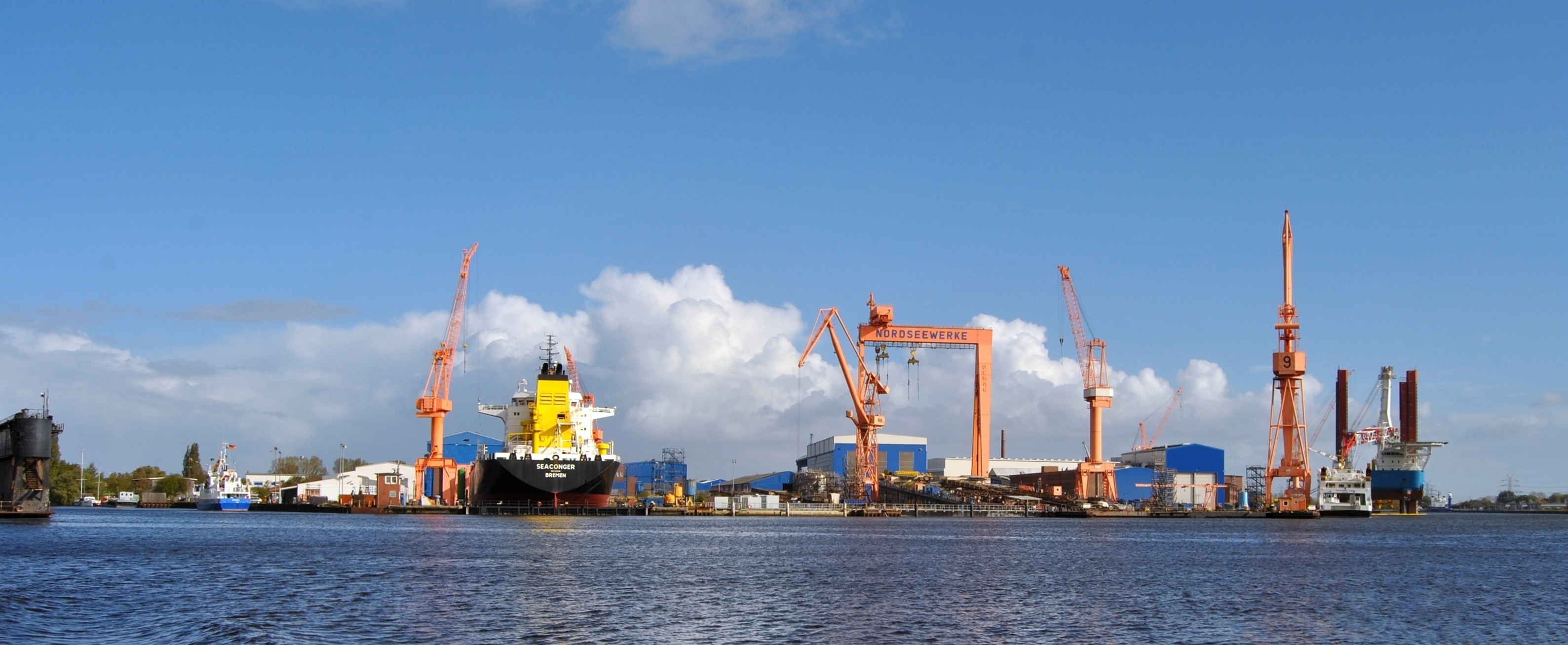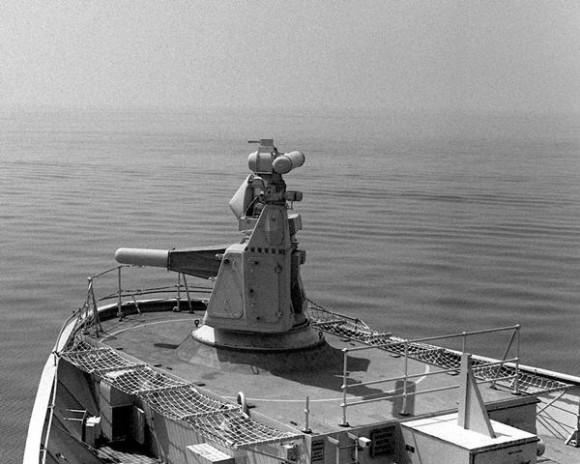|
German Frigate Lübeck (F214)
''Lübeck'' was a ''Bremen''-class frigate of the German Navy. Construction and commissioning ''Lübeck'' was laid in June 1987 at the yards of Nordseewerke, Emden and launched on 15 October 1987 by Rosemarie Knüppel, the wife of the then Mayor of Lübeck Robert Knüppel. After undergoing trials ''Lübeck'' was commissioned on 19 March 1990. She was based at Wilhelmshaven as part of ''4. Fregattengeschwader'', forming a component of '' Einsatzflottille 2''. Service After commissioning ''Lübeck'' participated in several international deployments. In 1994, 1995 and 1996 she was active in the Adriatic Sea as part of NATO's Operation Sharp Guard, the maritime blockade of the former Yugoslavia during the Yugoslav Wars. In 2003-2004, and again in 2005-2006, ''Lübeck'' deployed in support of Operation Enduring Freedom, an anti-terrorism mission. In November 2005 she escorted the cruise ship through the Gulf of Aden as part of an anti-piracy operation. In July 2007 ''Lübe ... [...More Info...] [...Related Items...] OR: [Wikipedia] [Google] [Baidu] |
Nordseewerke
Nordseewerke Emden GmbH (sometimes abbreviated NSWE, in English: North Sea Company) was a shipbuilding company, located in the Emden Harbor of the north German city of Emden. Founded in 1903, shipbuilding ended in 2010, and the company was taken over by the ''Schaaf Industrie AG'', which among other products, makes components for off-shore systems. The shipyard employed some 1,400 people in 2010 and was the second-largest employer in Emden, following the plant of the Volkswagen automotive company. Today only few of the former coworkers of the shipyard are still employed with the new owner Schaaf, which also went insolvent in 2012. History Nordseewerke was founded on March 11, 1903, and was one of the oldest among the still-existing shipyards in Germany. Its successor was the ''Schaaf Industrie AG''. The company built merchant ships of all categories, but also ships for the Kaiserliche Marine during World War I, the Kriegsmarine later, and today's modern Deutsche Marine. T ... [...More Info...] [...Related Items...] OR: [Wikipedia] [Google] [Baidu] |
Deutz MWM
Caterpillar Energy Solutions GmbH, is a mechanical engineering company based in Mannheim, Baden-Württemberg, Germany. It was known as MWM GmbH Motoren-Werke Mannheim (MWM) until November 2013. In 2009 the company was the third-largest producer by revenue of gas and diesel engines. The main focus of production is gas engines and gensets for the generation of electrical energy from 400 to 10,300 kWel per unit. It also provides consulting, designing and engineering, construction and commissioning of plants as well as global after sales service. The company also has its own training center. History In 1922 the department for the construction of stationary engines was outsourced and had its name changed from ''Benz & Cie. Rheinische Gasmotorenfabrik in Mannheim'' to ''Motorenwerke Mannheim''. The renowned German engineer Prosper L'Orange, a pioneer of diesel engine technology, was the technical manager then. Before that he worked for Benz & Cie. The construction of diesel engines ... [...More Info...] [...Related Items...] OR: [Wikipedia] [Google] [Baidu] |
Decoy
A decoy (derived from the Dutch ''de'' ''kooi'', literally "the cage" or possibly ''ende kooi'', " duck cage") is usually a person, device, or event which resembles what an individual or a group might be looking for, but it is only meant to lure them. Decoys have been used for centuries most notably in game hunting, but also in wartime and in the committing or resolving of crimes. Hunting In hunting wildfowl, the term decoy may refer to two distinct devices. One, the duck decoy (structure), is a long cone-shaped wickerwork tunnel installed on a small pond to catch wild ducks. After the ducks settled on the pond, a small, trained dog would herd the birds into the tunnel. The catch was formerly sent to market for food, but now these are used only by ornithologists to catch ducks to be ringed and released. The word ''decoy'', also originally found in English as "coy", derives from the Dutch ''de Kooi'' (the cage) and dates back to the early 17th century, when this type of duck ... [...More Info...] [...Related Items...] OR: [Wikipedia] [Google] [Baidu] |
Electronic Counter-measures
An electronic countermeasure (ECM) is an electrical or electronic device designed to trick or deceive radar, sonar, or other detection systems, like infrared (IR) or lasers. It may be used both offensively and defensively to deny targeting information to an enemy. The system may make many separate targets appear to the enemy, or make the real target appear to disappear or move about randomly. It is used effectively to protect aircraft from guided missiles. Most air forces use ECM to protect their aircraft from attack. It has also been deployed by military ships and recently on some advanced tanks to fool laser/IR guided missiles. It is frequently coupled with stealth advances so that the ECM systems have an easier job. Offensive ECM often takes the form of jamming. Self-protecting (defensive) ECM includes using blip enhancement and jamming of missile terminal homers. History The first example of electronic countermeasures being applied in a combat situation took place during ... [...More Info...] [...Related Items...] OR: [Wikipedia] [Google] [Baidu] |
Electronic Warfare Support Measures
In military telecommunications, electronic support (ES) or electronic support measures (ESM) gather intelligence through passive "listening" to electromagnetic radiations of military interest. They are an aspect of electronic warfare involving actions taken under direct control of an operational commander to detect, intercept, identify, locate, record, and/or analyze sources of radiated electromagnetic energy for the purposes of immediate threat recognition (such as warning that fire control RADAR has locked on a combat vehicle, ship, or aircraft) or longer-term operational planning.Polmar, Norman "The U. S. Navy Electronic Warfare (Part 1)" ''United States Naval Institute Proceedings'' October 1979 p.137 Thus, electronic support provides a source of information required for decisions involving electronic protection (EP), electronic attack (EA), avoidance, targeting, and other tactical employment of forces. Electronic support data can be used to produce signals intelligence (SIG ... [...More Info...] [...Related Items...] OR: [Wikipedia] [Google] [Baidu] |
Sonar
Sonar (sound navigation and ranging or sonic navigation and ranging) is a technique that uses sound propagation (usually underwater, as in submarine navigation) to navigation, navigate, measure distances (ranging), communicate with or detect objects on or under the surface of the water, such as other vessels. "Sonar" can refer to one of two types of technology: ''passive'' sonar means listening for the sound made by vessels; ''active'' sonar means emitting pulses of sounds and listening for echoes. Sonar may be used as a means of acoustic location and of measurement of the echo characteristics of "targets" in the water. Acoustic location in air was used before the introduction of radar. Sonar may also be used for robot navigation, and SODAR (an upward-looking in-air sonar) is used for atmospheric investigations. The term ''sonar'' is also used for the equipment used to generate and receive the sound. The acoustic frequencies used in sonar systems vary from very low (infrasonic ... [...More Info...] [...Related Items...] OR: [Wikipedia] [Google] [Baidu] |
STN Atlas
STN may refer to: Broadcasting * Score Television Network, a Canadian specialty channel * Shalimar Television Network, a Pakistani television network * Student Television Network, in the United States Transport * London Stansted Airport, England * Stanley station (North Dakota), an Amtrak station * Stonehaven railway station, Scotland Other uses * Owa language * São Tomé and Príncipe dobra currency * Schaghticoke Tribal Nation * Stantec, a Canadian architectural and engineering consulting firm * State transition network * STN International, an information service * Subthalamic nucleus, a subcortical structure in the brain * Super-twisted nematic display, a type of liquid crystal display * Szczecin Scientific Society ( pl, Szczecińskie Towarzystwo Naukowe, link=no), a Polish learned society See also * Public switched telephone network * Station (other) Station may refer to: Agriculture * Station (Australian agriculture), a large Australian landholding ... [...More Info...] [...Related Items...] OR: [Wikipedia] [Google] [Baidu] |
K Band (NATO)
The NATO K band is the obsolete designation given to the radio frequencies from 20 to 40 GHz (equivalent to wavelengths between 1.5 and 0.75 cm) during the cold war period. Since 1992 frequency allocations, allotment and assignments are in line to NATO Joint Civil/Military Frequency Agreement (NJFA). However, in order to identify military radio spectrum requirements, e.g. for crises management planning, training, electronic warfare Electronic warfare (EW) is any action involving the use of the electromagnetic spectrum (EM spectrum) or directed energy to control the spectrum, attack an enemy, or impede enemy assaults. The purpose of electronic warfare is to deny the opponen ... activities, or in military operations, this system is still in use. References {{EMSpectrum Microwave bands Satellite broadcasting ... [...More Info...] [...Related Items...] OR: [Wikipedia] [Google] [Baidu] |
Fire-control Radar
A fire-control radar (FCR) is a radar that is designed specifically to provide information (mainly target azimuth, elevation, range and range rate) to a fire-control system in order to direct weapons such that they hit a target. They are sometimes known as targeting radars, or in the UK, gun-laying radars. If the radar is used to guide a missile, it is often known as a target illuminator or illuminator radar. A typical fire-control radar emits a narrow, intense beam of radio waves to ensure accurate tracking information and to minimize the chance of losing track of the target. This makes them less suitable for initial detection of the target, and FCRs are often partnered with a medium-range search radar to fill this role. In British terminology, these medium-range systems were known as tactical control radars. Most modern radars have a track-while-scan capability, enabling them to function simultaneously as both fire-control radar and search radar. This works either by having t ... [...More Info...] [...Related Items...] OR: [Wikipedia] [Google] [Baidu] |
Thales Nederland
Thales Nederland B.V. (formerly Hollandse Signaalapparaten B.V. or in short Signaal) is a subsidiary of the French multinational company Thales Group based in the Netherlands. The firm was founded as ''NV Hazemeyer's Fabriek van Signaalapparaten'' during 1922 by Hazemeyer and Siemens & Halske to produce naval fire-control systems. During the Second World War, the company's factory was captured and pillaged by the German Army; shortly after the conflict's end, the remaining assets were nationalised by the Dutch government, the company being renamed ''N.V. Hollandsche Signaalapparaten'' (or ''Signaal'' for short). During 1956, the Netherlands-based electronics company Philips became the majority owner of Signaal after buying a large portion of the shares from the government. The firm expanded throughout much the Cold War period, producing various naval electronics and defense systems for a range of customers around the world. During 1990, the French electronics and defence contr ... [...More Info...] [...Related Items...] OR: [Wikipedia] [Google] [Baidu] |
J Band (NATO)
The NATO J band is the designation given to the radio frequencies from 10 to 20 GHz (equivalent to wavelengths between 3 and 1.5 cm). Since 1992 frequency allocations, allotment and assignments are in line to NATO Joint Civil/Military Frequency Agreement (NJFA). However, in order to identify military radio spectrum requirements, e.g. for crises management planning, training, Electronic warfare Electronic warfare (EW) is any action involving the use of the electromagnetic spectrum (EM spectrum) or directed energy to control the spectrum, attack an enemy, or impede enemy assaults. The purpose of electronic warfare is to deny the opponen ... activities, or in military operations, this system is still in use. References Radio spectrum {{Wireless-stub ... [...More Info...] [...Related Items...] OR: [Wikipedia] [Google] [Baidu] |






